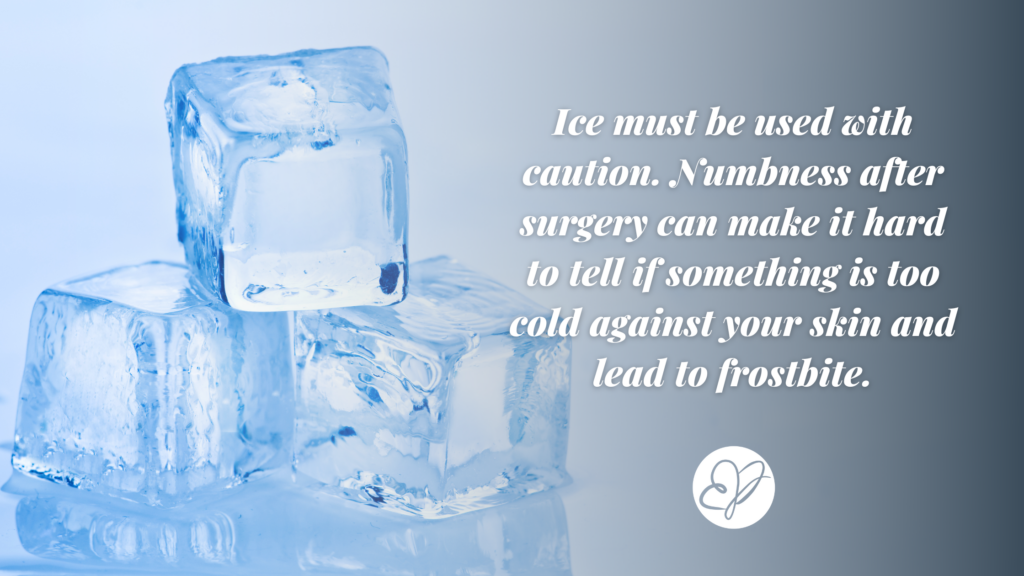The results of plastic surgery can be life changing. The sense of empowerment derived from loving how you look can elevate your self-confidence and influence how you interact with the people and world around you. However, some people write off plastic surgery for fear of a potentially painful recovery. Luckily, effective pain management methods exist both inside and outside of the operating room. Here are five unique ways Edina Plastic Surgery patients can manage discomfort after their plastic surgery procedure.
#1 – Ask Your Plastic Surgeon About EXPAREL®
Edina Plastic Surgery utilizes a long-lasting, non-opioid pain medication called EXPAREL® in several procedures, including breast augmentation and tummy tuck surgery. EXPAREL® (bupivacaine liposome injectable suspension) can relieve pain for up to 72 hours after surgery, which is generally the most painful time for patients.

At Edina Plastic Surgery, we find that if postoperative pain in the first two days after surgery can be significantly reduced, patients enter the remaining week after surgery with much less pain and need for medication. The EXPAREL® nerve block works on both muscle and surrounding soft tissue and provides a smooth, comfortable transition after surgery for up to three days. This is a win-win for patients who would rather avoid opioids and prolonged use of strong narcotics to manage their postoperative pain, which may cause nausea, vomiting, and gastrointestinal issues.
#2 – Reduce Swelling with Compression Garments
Many of the procedures offered at Edina Plastic Surgery require patients to wear compression garments immediately after surgery and for several weeks thereafter. Compression garments can help reduce swelling, provide support to the core of the body and the area operated on, and even enhance comfort with the pressure they provide after surgery.
#3 – Add Cold or Heat Therapy With Caution
Ice is frequently used post-surgery to relieve pain and discomfort. Heat therapy may also help relax muscle aches or spasms. However, both must be used with caution and under the guidance of your plastic surgeon. This is because the area of the body operated on is often slightly numb after surgery. This dulling of sensation can make it hard for a patient to gauge whether something is too hot or too cold against their skin. The last thing you or your surgeon want is a burn or frostbite to contend with after surgery. Follow the direct post-op guidelines from your surgeon and use a digital timer when sitting with cooling or warming packs against your skin.

#4 – Get Moving As Soon as Your Surgeon Recommends
Although getting up and moving after surgery may sound counterintuitive, it is crucial to your recovery. At Edina Plastic Surgery, we want our patients up, talking, drinking, eating, and walking as soon as possible after their procedure. This movement encourages blood flow, reduces swelling, heightens lymphatic drainage, and brings oxygen and vital nutrients to the areas of the body that are healing after surgery. Of course, it is not recommended that you push it too far. Your surgeon will have precise guidelines on what movements should be restricted, how much activity is recommended, and when. However, you should never just lay in bed all day after surgery.
#5 – Embrace Mindfulness, Meditation, and Lymphatic Massage
Mindfulness means different things to every patient. For some, it includes listening to a meditation app on their phone, while for others, the same level of relaxation is achieved simply by listening to music they love. The important thing is that the physiological benefits of a mindful practice are achieved, including lowering blood pressure and cortisol levels, reducing stress, and reducing any discomfort a patient may be feeling.

Lymphatic drainage massage is highly recommended after plastic surgery. This light form of tissue manipulation is an effective way to mobilize fluids, stimulate blood flow, reduce inflammation, ease discomfort and itching, and reduce swelling. First, see what lymphatic zone is closest to your surgical site. For example, after facelift surgery, you would massage and drain fluids down the neck to the corners of the collarbone. You would massage lightly outwards towards your underarm area for breast enhancement procedures.
The use of light vibration is also an excellent way to ease postoperative pain and discomfort. Look for smaller devices that have multiple levels or settings of vibration strength. Vibration therapy works by distracting the nerves in an area and disrupting their pain signals to the brain. This therapy is also very effective for any itching sensations after surgery. Again, pay attention to the postoperative instructions given to you by your surgeon to know how and when it is advisable to add lymphatic massage or vibration.
If you have been considering plastic surgery but are concerned about managing pain following your procedure, don’t hesitate to get in touch with our team! Together, we can construct a plan that works for your unique medical history, pain tolerance, and lifestyle. Schedule a complimentary consultation with an Edina Plastic Surgery surgeon by calling (612) 688-3177, texting (952) 925-1765 or CLICKING HERE.


